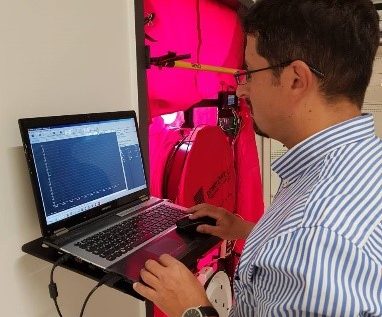Airtightness
At FUV, we have been conducting airtightness tests on our projects since 2011, making us the most experienced team in Greece, with expertise in both small and large-scale buildings. The founder of FUV, Theodoros Sotirios Tountas, is a member of the European platform for airtightness, TightVent Europe, and the World Society of Sustainable Energy Technologies (WSSET). He has presented the findings and conclusions from the first 100 airtightness tests on Greek buildings at three international conferences (Rotterdam 2022, Istanbul 2022, Hanover 2023). Airtightness plays a crucial role in three key areas of construction: energy efficiency, fire safety, and indoor air quality.

ENERGY
Airtightness is a key component in building design for preserving energy and reducing environmental impact. A well-sealed building envelope ensures reduced heat loss, improved HVAC performance, and enhanced indoor comfort, all of which contribute to lower energy consumption. By making airtightness a central element in building design, we can significantly support energy conservation, help mitigate climate change, and move towards a more sustainable future. This approach not only reduces operational costs but also positively contributes to broader global energy sustainability goals.
Fire Safety
Airtightness in building design is a critical component of fire protection. It safeguards property owners, limits the spread of fire and smoke, and enhances the overall safety of the building. Integrating airtightness principles into the design and construction process is essential to ensure that structures are equipped to effectively handle fire emergencies. By prioritizing airtightness alongside other fire protection measures, we can significantly reduce the risks associated with fires in the built environment, ultimately saving lives and protecting properties.
Indoor Air Quality
Indoor air quality (IAQ) is a crucial factor for the health, comfort, and productivity of building occupants. One often underestimated element of IAQ is the role of airtightness. A well-constructed, airtight envelope can significantly impact overall design, as airtightness is foundational for improving indoor air quality. It protects occupants from external pollutants, regulates fluctuations in humidity and temperature, and ensures the effective operation of ventilation systems. By prioritizing airtightness in building design, we can greatly contribute to a healthier and more comfortable indoor environment. This approach enhances occupant well-being and improves overall quality of life.
For more information, please visit www.aerosteganotita.gr.